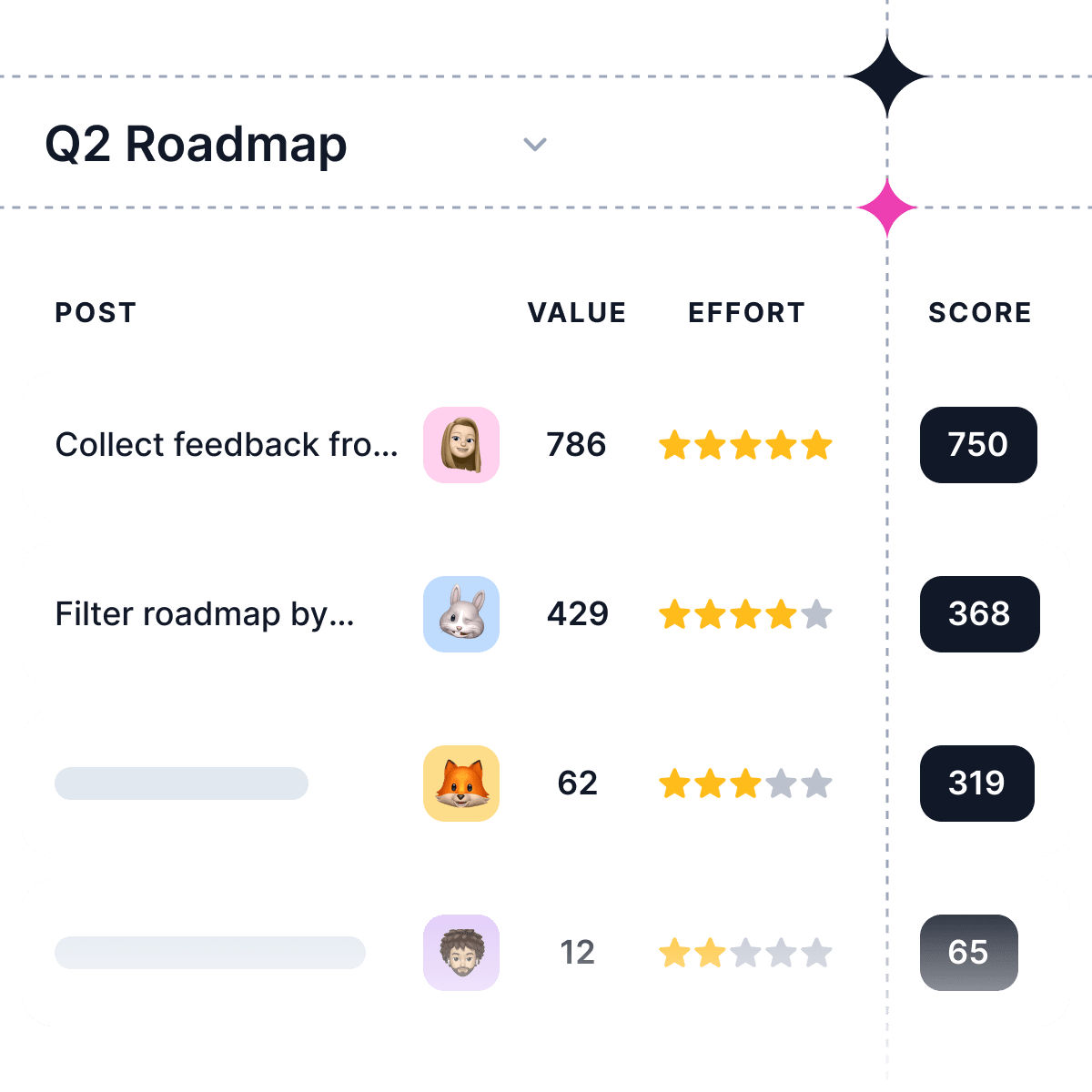In today's competitive business environment, understanding and meeting the needs of your users is crucial for success. Collecting user feedback is an essential aspect of this process, providing valuable insights to help you optimize your products and services. In this blog post, we'll delve into the importance of user feedback, explore various types of feedback, and discuss several effective methods for gathering it.
By implementing these strategies, you can improve the user experience, prioritize development efforts, foster innovation, and ultimately drive customer satisfaction and loyalty. Read on to learn more about harnessing the power of user feedback to boost your business.
What is User Feedback?
User feedback refers to the opinions, suggestions, and comments provided by users of a product or service. It can include information about the user experience, perceived strengths and weaknesses, feature requests, and any issues or concerns they may have encountered.
User feedback is valuable for businesses and developers as it provides insights into how users perceive and interact with their products, and helps guide improvements and enhancements. Gathering and analyzing user feedback is an essential part of the iterative development process and can lead to more user-centric and successful products.
What are the different types of user feedback?
There are two main types of user feedback:
-
Qualitative and
-
Quantitative
Qualitative feedback
Qualitative feedback involves asking users open-ended questions and getting them to expand on their answers.
This type of feedback is useful for:
-
Understanding why people behave the way that they do,
-
What their motivations are for doing so?
Quantitative feedback
Quantitative feedback involves collecting data from a survey or an online form where users have the option to answer multiple-choice questions about your product.
This type of feedback is useful to:
-
Get a general idea about how people feel about your product,
-
Find out what features are most popular and which ones need improvement.
User feedback has a lot of value for product managers and product teams, as it can help you understand:
-
What your users want
-
How do your users use the product
-
How users feel about the product
-
How to improve the product
-
What features do users want, don't want, and don't use
Why is User Feedback important?
Before we dive into the methods to collect user feedback, let's first understand why it's essential for businesses.
-
Improve the user experience: User feedback helps identify areas of improvement, uncover pain points, and address usability issues. By understanding user perspectives and preferences, product teams can make adjustments and enhancements to create a better user experience.
-
Enhance product quality: User feedback provides insights into product strengths and weaknesses. It helps identify bugs, glitches, or functionality gaps that may have been overlooked during development. By addressing these issues based on user feedback, product quality can be improved.
-
Prioritize features and updates: User feedback helps prioritize feature requests and updates based on user needs and preferences. It allows product teams to allocate resources and efforts effectively and focus on areas that will have the most impact on user satisfaction and retention.
-
Drive innovation: User feedback can inspire new ideas and drive innovation. By actively listening to users, product teams can gain insights into emerging trends, user behavior patterns, and unmet needs. This feedback can help guide the development of new features or even entire products that meet user demands and expectations.
-
Increase user engagement and loyalty: Incorporating user feedback into product development, shows that the product team values user opinions and is committed to meeting their needs. This can lead to increased user engagement and loyalty as users feel empowered and invested in the product.
-
Gain a competitive edge: User feedback can provide a competitive advantage by helping product teams understand how their product stacks up against competitors. By listening to user feedback, product teams can identify unique selling points or areas where their product outperforms competitors, giving them an edge in the market.
-
Build strong relationships with users: By actively seeking and addressing user feedback, product teams can build strong relationships with their users. This fosters trust, loyalty, and a sense of collaboration, leading to a greater likelihood of user advocacy and positive word-of-mouth.
Overall, user feedback is important because it helps improve products, enhances the user experience, prioritizes development efforts, drives innovation, increases user engagement, and builds strong relationships with users. With these benefits in mind, let's explore some effective ways to collect user feedback.
Effective Ways to Collect User Feedback
1. Surveys
Surveys are a popular and straightforward method for collecting user feedback. They can be distributed through various channels, such as email, and social media, or embedded directly on your website.
Tips for Creating Effective Surveys:
-
Keep it short and focused: Long surveys may deter users from completing them, so aim for a concise set of questions that target specific areas of interest.
-
Use a mix of open-ended and closed-ended questions: While closed-ended questions (e.g., multiple choice) can provide quantitative data, open-ended questions allow users to express their thoughts and opinions more freely.
-
Test your survey before distribution: Ensure that your questions are clear and easy to understand and that the survey functions properly on various devices.
2. In-App Feedback
In-app feedback tools enable you to collect user feedback directly within your product or service. These tools can be particularly useful for gathering real-time feedback from users as they interact with your offering.
Examples of In-App Feedback Tools:
-
Feedback widgets: These are small icons or buttons that users can click to provide feedback or report issues.
-
Contextual surveys: These are short surveys that appear at specific moments within the user journey, targeting feedback on a particular aspect of the user experience.
3. Online Reviews and Ratings
Encouraging users to leave reviews and ratings on platforms such as Google My Business, Yelp, and industry-specific review sites can provide valuable feedback on your products or services. These reviews can also boost your online reputation and improve your search engine rankings.
How to Encourage Users to Leave Reviews:
-
Ask for reviews: Send follow-up emails to customers after they've made a purchase or completed a service, politely requesting that they leave a review.
-
Offer incentives: Consider offering discounts, rewards, or contest entries in exchange for users leaving a review.
-
Make it easy: Provide direct links to your review pages on various platforms, making it as simple as possible for users to leave their feedback.
4. Social Media Monitoring
Monitoring social media platforms can provide a wealth of user feedback, as customers often share their thoughts and experiences with brands, products, and services. To effectively collect user feedback from social media, consider using social listening tools that track mentions of your brand or specific keywords related to your industry.
Tips for Social Media Monitoring:
-
Respond to comments and messages: Engaging with users on social media can help you gather additional feedback and demonstrate that you value their opinions.
-
Analyze sentiment: Use social listening tools to gauge the overall sentiment of the feedback you receive, helping you identify trends and areas that may require attention.
5. User Interviews and Focus Groups
Conducting user interviews or focus groups can provide in-depth insights into user experiences and perceptions. These methods involve direct interaction with users, allowing for open discussions and the opportunity to ask follow-up questions.
Tips for Conducting User Interviews and Focus Groups:
-
Prepare your questions in advance: Have a clear list of topics and questions you want to cover, while also remaining open to exploring new areas of discussion that may arise.
-
Be an active listener: Encourage participants to share their thoughts openly, and listen carefully to their feedback without interrupting or imposing your own opinions.
-
Record and analyze the data: Take detailed notes or record the sessions for later analysis, enabling you to identify patterns and extract actionable insights from the feedback.
6. User feedback platforms
User feedback platforms are dedicated tools designed to streamline the process of collecting, managing, and analyzing user feedback. Utilize dedicated user feedback platforms like Supahub, UserVoice, GetFeedback, or Uservoice to collect, manage, and analyze user feedback in a centralized manner.
These platforms often offer a variety of features, such as customizable surveys, in-app feedback tools, and integrations with popular communication and project management software. By utilizing a user feedback platform, product teams can centralize feedback from multiple sources, making it easier to identify trends, prioritize improvements, and track the impact of changes over time.
Tips for using User feedback platforms:
-
Choose a platform that fits your needs: Evaluate the features, pricing, and integrations offered by different platforms, and select one that aligns with your team's requirements and workflow.
-
Train your team: Ensure that your team is familiar with the platform and its features, so they can effectively collect, manage, and analyze user feedback.
-
Monitor and adjust: Regularly review the feedback collected and adjust your strategies or product roadmap accordingly to address user needs and concerns.
By employing a combination of these effective methods to collect user feedback, you can gain valuable insights into how your customers perceive your products or services. This information can then be used to make data-driven decisions that ultimately enhance the user experience and drive customer satisfaction.
How to prioritize user feedback?
A common problem with gathering user feedback is that there’s simply too much of it. To quickly prioritize your work, product managers should look for patterns in customer behavior and expectations. From there they can decide what needs to be done first, second, and third.
For example, if users are constantly complaining about the same feature then it might not be worth spending time on other things until this issue is resolved.
There are several ways to prioritize user feedback, from the impact it has on your business to its value.
Prioritize by impact
The most common approach is to prioritize by impact. This can be measured by how many customers have experienced this issue and how frequently they see it or talk about it. If you're running an e-commerce store, for example, you can identify those who've abandoned their shopping carts in the past 30 days as having a high impact. A lower-impact item might be something like "I wish there were more information on our website about our products."
Prioritize by value
Prioritizing by value is another way to rank user feedback; this method would ask what sort of value each piece of feedback brings to your product or service rather than focusing simply on whether or not users experience a problem with it (which could be very expensive). For example: "I want my customers' first experience with us when they visit our website" is more valuable than "I don't think we need a live chat feature on our web page."
Prioritize by user segment
Finally, one way businesses can prioritize their user feedback is by customer type: Which segments of users need which solutions? Your business may have different needs based on whether you're primarily targeting consumers or businesses and even within either segment, there could still be different subgroups with unique needs that should be considered separately when prioritizing features or changes in marketing materials.
Conclusion
By implementing a variety of methods, such as surveys, in-app feedback, online reviews, social media monitoring, user interviews, and user feedback platforms, you can gather comprehensive insights into your users' needs, preferences, and experiences. These insights can then be used to optimize your product or service, enhance user experience, prioritize feature development, drive innovation, and foster strong relationships with your users. By actively listening to your users and incorporating their feedback, you not only improve your offering but also demonstrate your commitment to meeting their needs, boosting user engagement, loyalty, and overall satisfaction.






